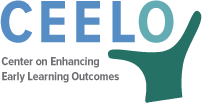 The driving force for bringing concerned parties together is recognizing an urgent issue that affects many and therefore must be addressed promptly and comprehensively. Urgent issues are compelling to wide audiences, speaking to both head and heart. Hard data and real-life stories work together to make the case. For example, early education gained rapid momentum in 1989 when the National Education Goals Panel composed of the nation’s 50 governors and President selected early education as Goal One when they declared “By the year 2000, all children will start school ready to learn.” This goal was further reinforced by a national study that more than one-third of kindergartners were entering school not ready to participate successfully (Boyer, 1990). Urgent issues capable of mobilizing a critical mass of citizen leaders exist at the community level, less so at the program level. Matters of urgency for one person, group or agency may not be compelling enough to enlist the involvement of others. Further, as Steven Covey reminds, issues must not simply be urgent, they must be important.
The driving force for bringing concerned parties together is recognizing an urgent issue that affects many and therefore must be addressed promptly and comprehensively. Urgent issues are compelling to wide audiences, speaking to both head and heart. Hard data and real-life stories work together to make the case. For example, early education gained rapid momentum in 1989 when the National Education Goals Panel composed of the nation’s 50 governors and President selected early education as Goal One when they declared “By the year 2000, all children will start school ready to learn.” This goal was further reinforced by a national study that more than one-third of kindergartners were entering school not ready to participate successfully (Boyer, 1990). Urgent issues capable of mobilizing a critical mass of citizen leaders exist at the community level, less so at the program level. Matters of urgency for one person, group or agency may not be compelling enough to enlist the involvement of others. Further, as Steven Covey reminds, issues must not simply be urgent, they must be important.
One reason why early education has become a key school reform and community development solution has been its research-based preventive connection to concerning outcomes such as poor reading skills, school dropout, teen pregnancy, crime, and poverty, the results of which can be quantified in terms of the cost of poor outcomes. Critical to identifying any issue and getting the correct answer begins by asking the right question.
How are urgent issues determined? Urgency may be created internally or externally. External urgency may come about as a result of an assignment placed on an individual or group, such as mandates through federal or state legislation, administrative priorities, or intolerable community conditions. Internal urgency is more localized, often confined within one’s SEA and LEA. Both are equally valid though external urgency often carries higher stakes, attracts a higher profile, and engages broader involvement of diverse stakeholders.
 Urgency is supported by data and stories. Both quantitative and qualitative data speak effectively to different audiences. Data are found in many places – statewide longitudinal data systems, US Census, kindergarten readiness assessment results, state pre-K evaluation reports. Data are also captured in the experiences of people. When Collective Leadership is exercised, all pertinent forms of data contribute to better understanding. As the group develops its shared understanding, it may rely on techniques such as brainstorming, interviewing, surveying, list reduction, Pareto analysis, or weighted voting to refine its thinking. Behavior Over Time Graphs (BOTG example for Brookings at left) are particularly useful as data on specified variables are plotted over time to discover any trends, as demonstrated in the figure below examining NAEP math and reading scores over 15 years.
Urgency is supported by data and stories. Both quantitative and qualitative data speak effectively to different audiences. Data are found in many places – statewide longitudinal data systems, US Census, kindergarten readiness assessment results, state pre-K evaluation reports. Data are also captured in the experiences of people. When Collective Leadership is exercised, all pertinent forms of data contribute to better understanding. As the group develops its shared understanding, it may rely on techniques such as brainstorming, interviewing, surveying, list reduction, Pareto analysis, or weighted voting to refine its thinking. Behavior Over Time Graphs (BOTG example for Brookings at left) are particularly useful as data on specified variables are plotted over time to discover any trends, as demonstrated in the figure below examining NAEP math and reading scores over 15 years.
Resources
- Tips for Behavior-Over-Time Graphs (Waters Foundation)
- Getting Started with Behavior Over Time Graphs (Richardson & Lyneis, 1998)
- Innovation Management Toolbox (Tidd, Bessant & Pavitt, 2005)
Activities
- BOTG With Questions (Waters Foundation)
